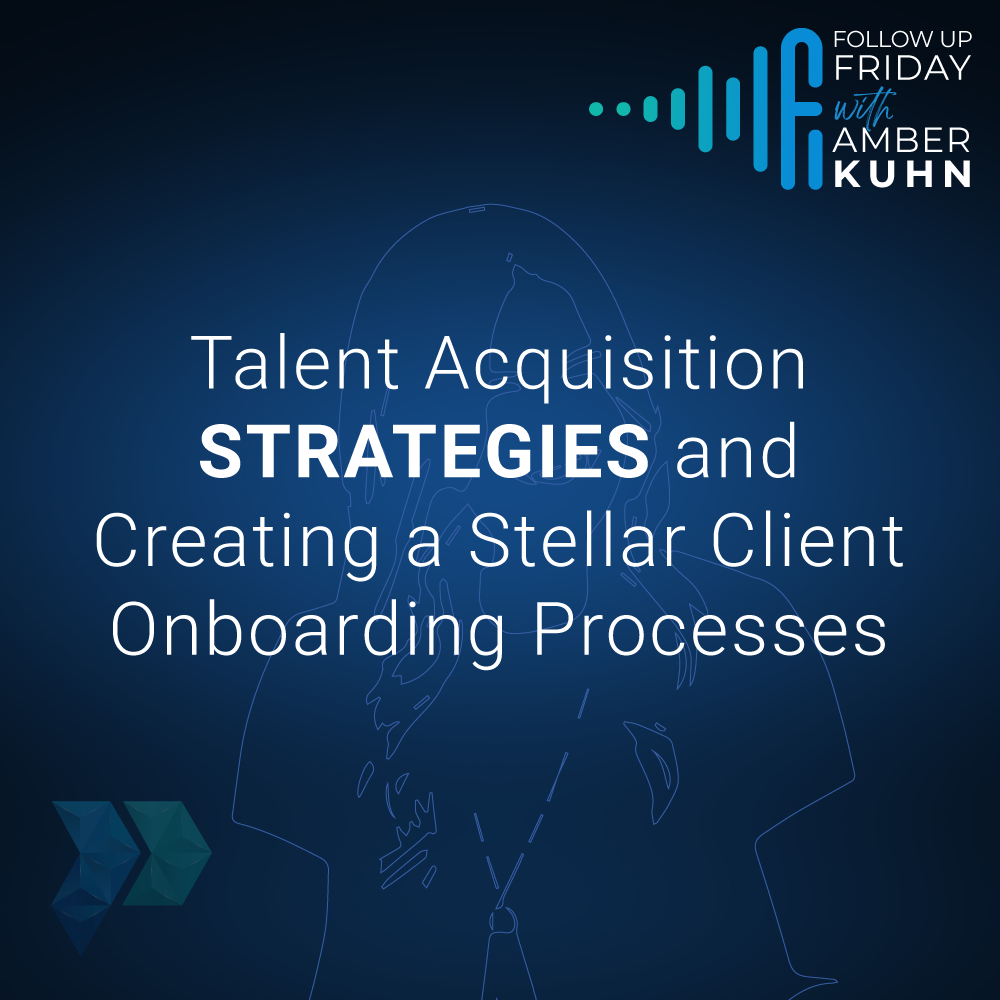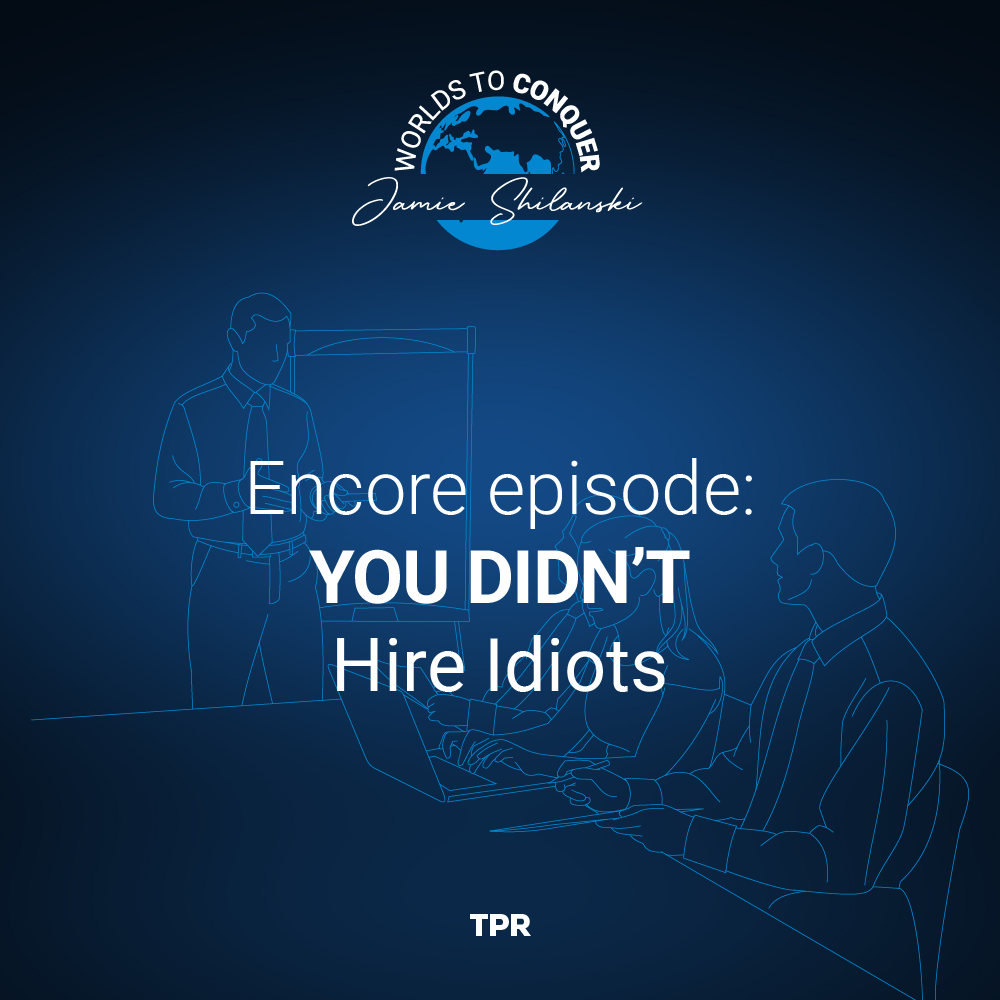What You'll Learn In Today's Episode:
- Understand the value you provide to clients and align your team with that value.
- Timing is important when hiring, and a strong value proposition and attractive compensation package are key.
- Differentiate yourself with unique benefits and screen for cultural fit when hiring.
- Set expectations and deliver value from the beginning of the client onboarding process.
- Emphasize the importance of estate planning and cash flow in the financial planning process.
- Maintain consistent communication with clients and set standards for client interactions.
In this recap episode, Amber shares insights to help financial advisors in their hiring strategy and streamline their client onboarding process to set the stage for a rewarding advisory relationship.
On Monday’s episode, Matt and Claire Myers Vitale dove into compensation and team-building strategies tailored for financial advisors. They emphasized the importance of understanding the true value you provide to clients and aligning your team’s goals and incentives with that value proposition. Their discussion also focused on optimal timing for hiring, crafting an attractive compensation package, and differentiating your firm with unique benefits that resonate with top talent during the recruiting process.
Thursday’s encore “Worlds to Conquer” episode featured Jamie walking listeners through the critical client onboarding phase. She stressed the importance of setting clear expectations from the outset and consistently delivering value that exceeds those expectations. She also provided insights on setting standards for client interactions that foster trust and reinforce your firm’s commitment to exceptional service.
Whether you’re a seasoned financial advisor or just starting out, this information-packed episode offers actionable strategies to elevate your client onboarding experience, build a high-performing team, and cement your firm’s reputation for delivering unparalleled value.
Resources In Today's Episode:
Read the Transcript Below:
Amber
Hello, TPR nation. This is Amber Kuhn. Thank you for joining me on today’s Follow up Friday where I’ll be recapping this week’s episode highlights and action items. On Monday Matt was joined by Claire Myers Vitale from Claire Myers Consulting, where she helps advisors build their teams. Claire and Matt discuss compensation which isn’t always about having a base and some major bonus structure making offers and when it’s the time to bring someone into your team. Claire said when it comes to helping advisors get started with this, that it really all begins with that first introductory call because sometimes what an advisor thinks they want is actually different from what they need. She said it comes back to what value are you providing your clients and are you able to fulfill that value? If you can’t, you need to work on what investment you want to make an organization. It’s all about what you’re trying to accomplish in your practice. Sometimes, though, the question is really whether you need to bring someone on or if your team is just not performing correctly. That’s not to make sure you are trying to cover up a bad system by making another hire. Sometimes this is more of a systems issue. Claire said most people need to hire an executive assistant sooner than they think they do. That the second year calendar is at capacity. That’s when you should think about hiring someone and it takes between 45 to 60 days to find someone so overall you’re looking at around three months or more before you actually are able to bring someone in. As far as what makes an attractive offer, Claire said you have to make sure that you have a really strong value proposition and your ideal client is honed in. She said that compensation is a driver to attracting the right person and equity compensation and a part of some sort of ownership is big as well, especially when it comes to lead advisors. And part of what can be attractive to a potential hire is what you do in your community and how you’re helping others. Claire said you can also differentiate yourself with benefits that you offer as well that aren’t just about writing big checks. So some examples of those are sabbaticals, community service days, flexibility with time or even finding out something that the potential employee is passionate about that you can accommodate for. These are things that stand out in the selection process. Claire said that if you’re hiring someone on your own, you need to make sure you understand what kind of culture you want. Be sure to screen for that. Let’s get into action items. If you need to add team members, use a recruiter. Hire someone to help you through this. Of course we’ve linked Claire’s information if you’d like to connect with her for your needs, work on your value proposition. Take what you use for your clients and flip that into attracting the right talent. With that, look at your LinkedIn presence and post your community involvement and client testimonials. Now if you are going to hire someone on your own, utilize Chat GPT for your job description. If you’re going to post on LinkedIn, sponsor it and don’t leave it up longer than a week. Lastly, something that was near to Claire’s passion is to look up foster care closets in your community. Thursday was an encore episode of Worlds to Conquer where Jamie walked through the onboarding process for what happens once you get hired by a client focusing on creating a solid foundation and what to do during that first year to deliver massive and how does that work during surge? With Client Onboarding, Jamie said you need to hit a homerun once the prospect has said yes and hired you. You need to make sure that you truly have a plan for what you’re going to do for the rest of the year to deliver massive value. Especially when you get hired by a client at the beginning of surge and you’re not available to meet with him for a couple of months. Jamie said setting those expectations from the get go is so important. And it’s something that you set when they’re a prospect because they already know that they can expect to meet with a financial advisor immediately. In some instances the new client might meet with an advisor during a buffer day at the end of surge. But if not in in the meantime, they have all the homework outline for both what the advisor and team needs to do, as well as what the client needs to do in between the time that they’re hired and their next meeting. And they go through all of this list with the client. They provide action items for the client at the end of their meetings and attach deadlines that the client agrees to. If that time has passed without the client providing that information, then the RM or the ops team can reach out depending on what that item is. Jamie said you want to make sure that you’re giving the client small digestible tasks and milestones that they can achieve. When Jamie’s talking with clients for their onboarding, she compares the building their financial plan to building a house and how it all starts with a good foundation. And that estate planning needs to happen first because without it, nothing that they put together matters. And it’s something that clients will want but also hoarsely tackle this first. And she sets the expectation for what they’ll be discussing in each meeting. And so of course, every time they meet she’s reinforcing what they’re doing and what they’re trying to accomplish. Jamie will also talk about cashflow and a client spending plan and incorporating that into their financial plan. And this is something that we’ll talk about at every single meeting. They’ll go through goals, tax planning, investments and insurance but all of this is shared as things that they’ll be discussing over the next couple of years. And in every meeting over the next couple of years, Jamie will reference building that house and comparing it to the financial plan and reinforcing what they’re doing. Jamie mentioned that it’s easy to have head trash about not having contact with clients in between meetings. And she said the best fix for that is to check your CRM to see that communication between the client and your team. It’s a reminder that the client will have multiple points of contact but they don’t always need to talk to the financial advisor directly on things. And it’s okay to set standards with your client so that they understand who they’ll be communicating with and that it won’t always be with the financial advisor. Let’s get an action items. Remember that you need to set good expectations. Whatever you said in the beginning is what will last until the very end. You can’t expect your team to follow all the processes you’ve laid out. If you can’t make an exception so do what your say you’re going to do. Make sure to lay out what your financial planning process will be for your clients so they understand how things will be achieved over time. Check your CRM to see all the points of contact and put the words for so that you’re only talking to clients every couple of months. But the team is talking with them more frequently. And trust in your processes, your systems and in your team. Before we go TPR Nation if you’re looking for an opportunity to learn in person from Matt and Micah, be sure to join us this September TPR LIVE in Arizona. Visit theperfectria.com/live for more information and to save your spot. And if you’re interested in our upcoming master class on prospecting, email us at lifestyle@theperfectria.com. That wraps up this week’s recap! Thank you for joining me and please share this or any of our episodes with another advisor or a team member who you think might benefit from listening. And be sure to subscribe to The Perfect Ria Podcast so you don’t miss an episode. Until next time, happy planning!








